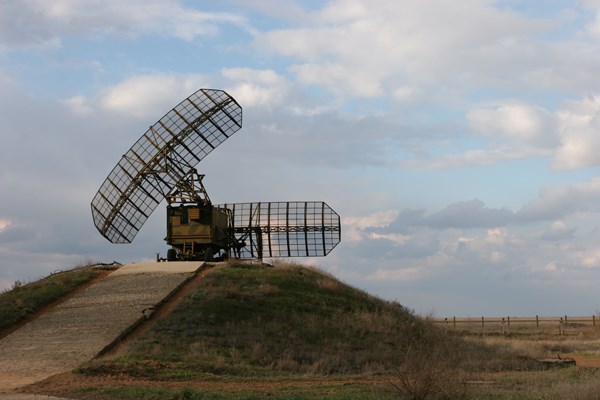Ukrainian Forces targeting Russian radar and air defense systems in preparation for F-16s Arrival
Ukraine aims to eliminate as many Russian defense systems as possible before the arrival of the first F-16 fighter jets.
In recent days, Ukrainian forces have not only managed to stabilize the fronts in Donbas and north of Kharkiv but have also intensified strikes on Russia-controlled interior regions.
Remarkably, the latest series of attacks are primarily targeted at the "eyes" of Russian military power - radar systems and associated air defense mechanisms. Since April 20, no fewer than ten significant attacks on such targets have been executed, with half occurring in the last seven days, reports the Swiss newspaper Neue Zürcher Zeitung.
Not all these attacks were successful, but overall, Russia has suffered substantial losses. Additionally, Moscow faces the grim realization that its own air defense is becoming increasingly porous.
This, in turn, facilitates subsequent attacks. For Ukraine, it is probably crucial to destroy as many Russian defense systems as possible before the first F-16 fighters arrive, thereby making the airspace safer for Western aircraft.
An especially striking blow was the recent destruction of a modern Russian S-400 defense system in the Donetsk area last week. A surveillance drone uninterruptedly recorded how one by one, launchers and the corresponding radar burned in the inferno. The Russian unit launched several missiles to fend off the attack but ineffectively. Ukrainians used short-range ballistic missiles ATACMS. They come in several variants, and in this instance, a cluster munition warhead was deployed. Drone footage shows mini-bombs spreading over a vast area, exploding, and fueling an inferno.
The Ukrainians used the same method in another attack on the outskirts of Luhansk on Tuesday evening. Satellite images after the incident show traces of a vast fire spanning half a kilometer in diameter at a military airfield.
The attack was seemingly aimed at two mobile radar installations, visible in previous satellite images. It remains unknown whether they were destroyed.
For the Russians, this would be a bitter loss, as the "Nebo-M" radar complex is not only extremely costly but also hard to replace. The "Nebo-M" is utilized to detect missile and aircraft movements up to 600 kilometers away, covering half of Ukraine.
There has been a struggle over American ATACMS missiles for several months. The Biden administration first provided around twenty of these missiles last autumn, but they were soon expended. Only earlier this year were new, significantly larger shipments delivered, including missiles with double the range (300 kilometers). In recent weeks, Ukrainians have used them to bomb two military airfields in Crimea. On both occasions, they destroyed components of the S-400 missile systems.
In mid-May, the AI-Petri radar complex in Crimea, which serves for long-range reconnaissance and was installed during Soviet times, was also targeted.
The commander of this highly classified outpost sustained fatal injuries. In this case, British-French Storm Shadow cruise missiles were likely used. Moreover, some experts consider it plausible that Ukrainian forces managed to sink the military ship Tsyclone in Sevastopol harbour with an ATACMS missile last week.
Since then, the ship has left no traces. The corvette, belonging to the so-called "Karakurt" class, was one of the few platforms Russia could use to launch sea-based cruise missiles at Ukraine.
The Russians had no doubts about the ship being in danger. Following a previous attack that damaged a similar vessel, Moscow moved the remaining two Tsyclone ships from the Black Sea to safer locations via inland canals to the Caspian Sea.
All the mentioned attacks were executed with Western weaponry. Their successful deployment highlights how crucial these armaments are and how much earlier they could have benefited the Ukrainians had they been delivered sooner.
For American ATACMS, British-French Storm Shadows, German precision artillery munitions, and many more, it is stipulated that they can only be used for attacks within Ukraine's internationally recognised borders. Targets within Russian territory are still off-limits.
French President Emmanuel Macron was the first head of state from a major NATO country to advocate for easing this restriction during a joint appearance with German Chancellor Olaf Scholz on Tuesday evening.
Macron called for an exception for "military targets from which Ukraine is attacked." This would exclude strikes on Russian oil refineries and likely military logistics facilities.
Western governments are moving towards a new regulation. Following Russia's cross-border attacks on the Kharkiv region, officials from several other nations, including the UK, Sweden, Poland, and the Baltic States, have also recently advocated for loosening the restriction.
NATO Secretary-General Jens Stoltenberg has recently called for the same. However, nothing has been decided yet, as there is no consensus within the Western alliance.
The main hesitating party is US President Joe Biden. Greater flexibility from him in allowing ATACMS deployment against specific Russian targets could shift NATO's overall stance.
Within American debates, Secretary of State Antony Blinken appears to be siding with proponents. According to The Washington Post, influenced by recent events, Biden is now also considering relaxing the deployment ban.
For now, Ukrainian hands are tied. Should they detect Russian troop movements just across the border, their only option would be to use much weaker kamikaze drones.
However, they continue to use these drones against radar systems: in recent days, Ukraine has repeatedly attacked Russian early warning systems like the "Voronezh-DM" and damaged one in southern Russia.
Another such target was hit in the Southern Urals, with the drone setting a new distance record, covering at least 1,500 kilometers.
Russia has only nine Voronezh radar stations scattered across the country. These are designed for early detection of medium and intercontinental-range enemy missiles.
This holds no relevance in the Ukraine conflict, thus offering Kyiv no direct advantage if these systems fail. However, the clear aim seems to be to demonstrate to the Kremlin that Ukrainian drones can inflict strategic-level damage on Russia.
